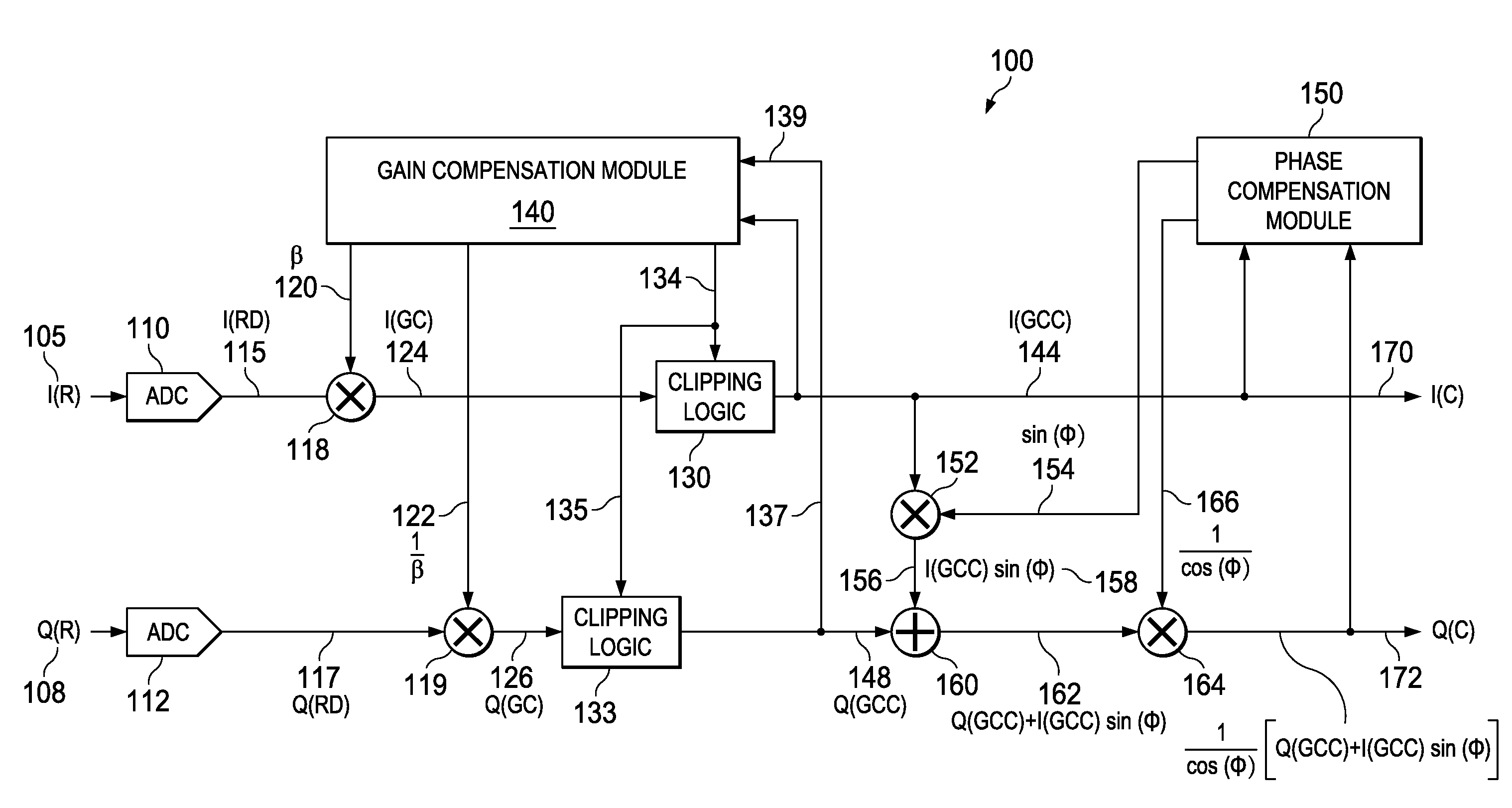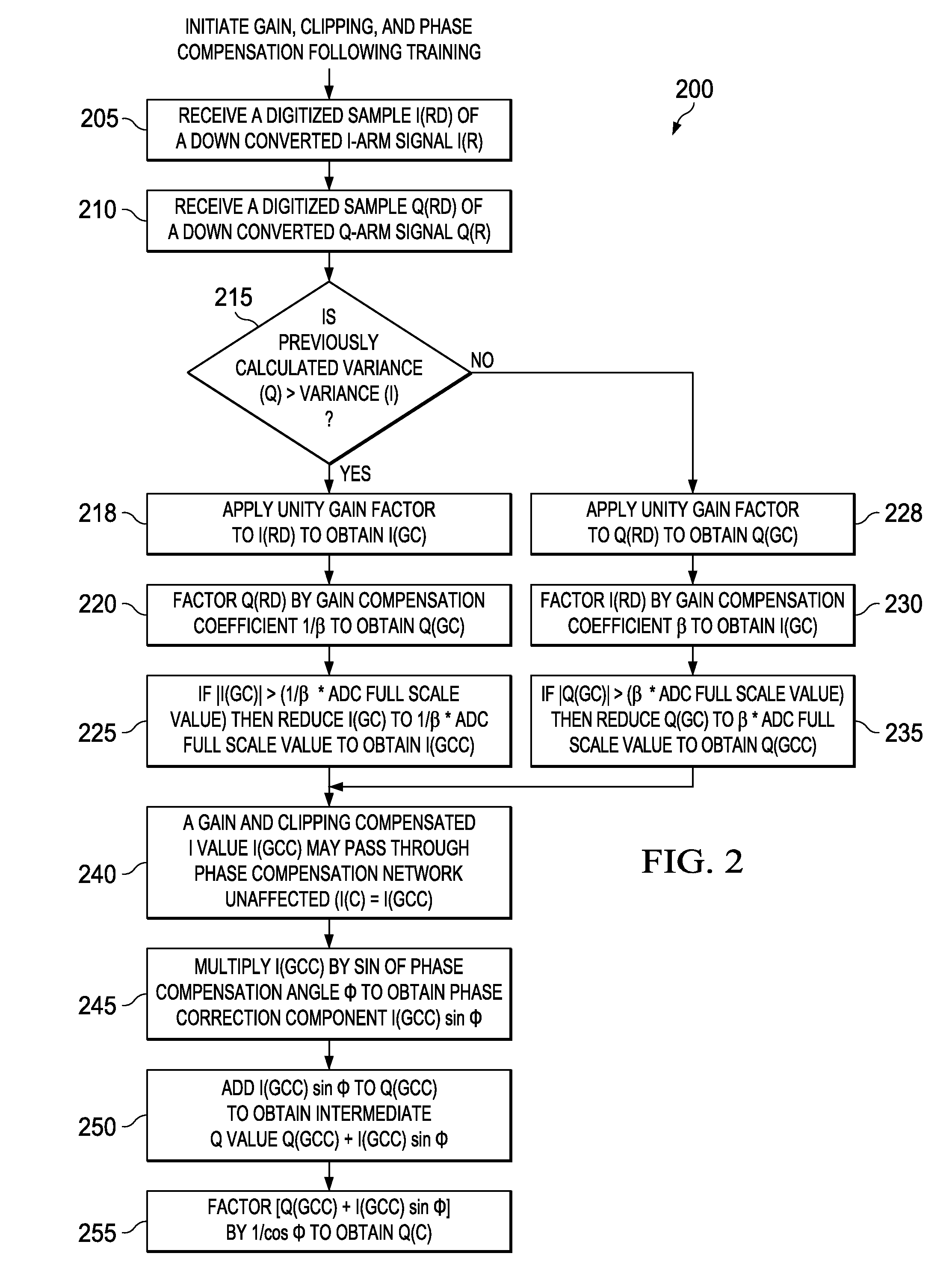Blind i/q mismatch compensation with receiver non-linearity
a receiver non-linearity and blind technology, applied in the field of electronic circuits, can solve problems such as i/q mismatch, i/q mismatch, and extraneous lo energy components in the image spectrum, and achieve the effects of reducing dynamic range, preventing clipping, and sufficient dynamic rang
- Summary
- Abstract
- Description
- Claims
- Application Information
AI Technical Summary
Benefits of technology
Problems solved by technology
Method used
Image
Examples
Embodiment Construction
[0024]FIG. 1 is a diagram of a gain and phase compensation network 100 according to various example embodiments of the invention. Down-converted and filtered analog signals I(R) 105 and Q(R) 108 are received at ADCs 110 and 112, respectively. The ADC's 110 and 112 convert the analog signals I(R) 105 and Q(R) 108 to digitally sampled data streams I(RD) 115 and Q(RD) 117, respectively.
[0025]The compensation network 100 includes an I-arm multiplier 118 and a Q-arm multiplier 119 communicatively coupled to the ADCs 110 and 112, respectively. The I-arm multiplier 118, the Q-arm multiplier 119, or both, factor one or more sets of received data samples from the I-arm data stream I(RD) 115 and / or the Q-arm data stream Q(RD) 117. I-arm data samples, if factored, are factored by a gain compensation coefficient β appearing at a multiplier input 120. Q-arm data samples, if factored, are factored by a gain compensation coefficient 1 / β appearing at a clipping logic module input 122. Gain-compensa...
PUM
 Login to View More
Login to View More Abstract
Description
Claims
Application Information
 Login to View More
Login to View More - R&D
- Intellectual Property
- Life Sciences
- Materials
- Tech Scout
- Unparalleled Data Quality
- Higher Quality Content
- 60% Fewer Hallucinations
Browse by: Latest US Patents, China's latest patents, Technical Efficacy Thesaurus, Application Domain, Technology Topic, Popular Technical Reports.
© 2025 PatSnap. All rights reserved.Legal|Privacy policy|Modern Slavery Act Transparency Statement|Sitemap|About US| Contact US: help@patsnap.com



